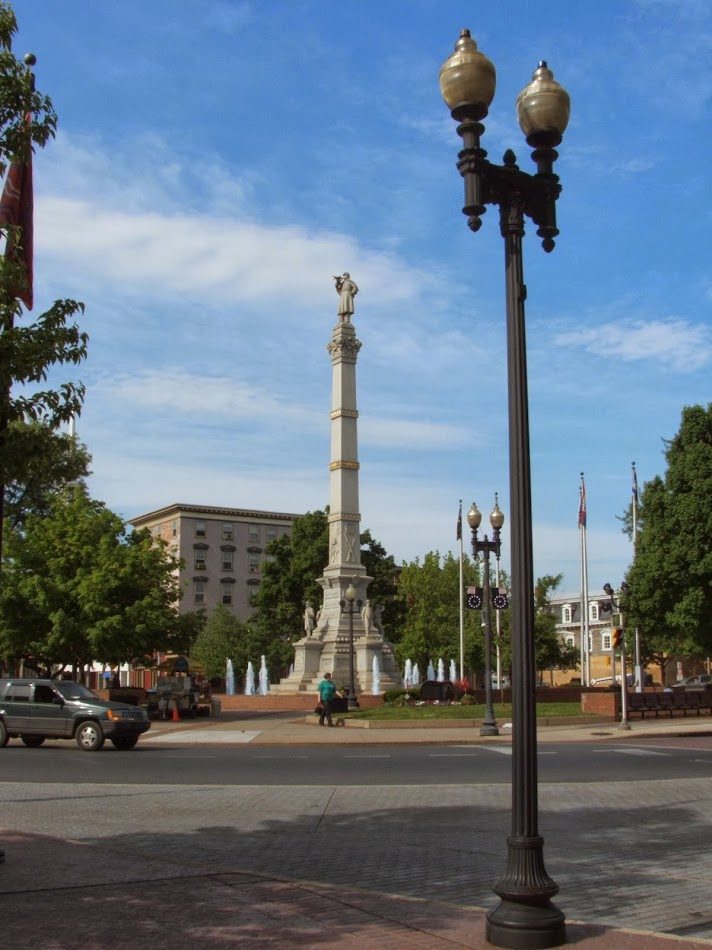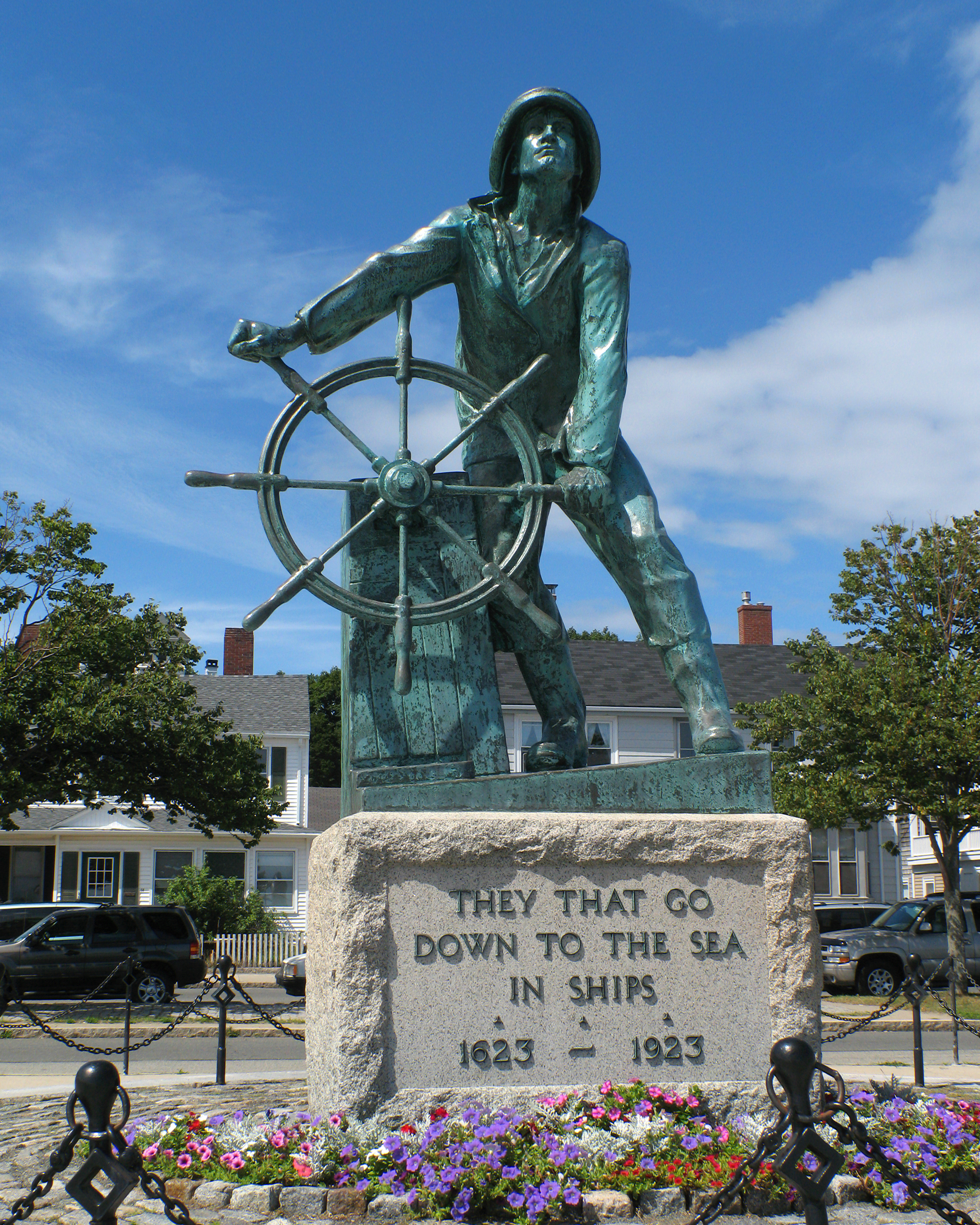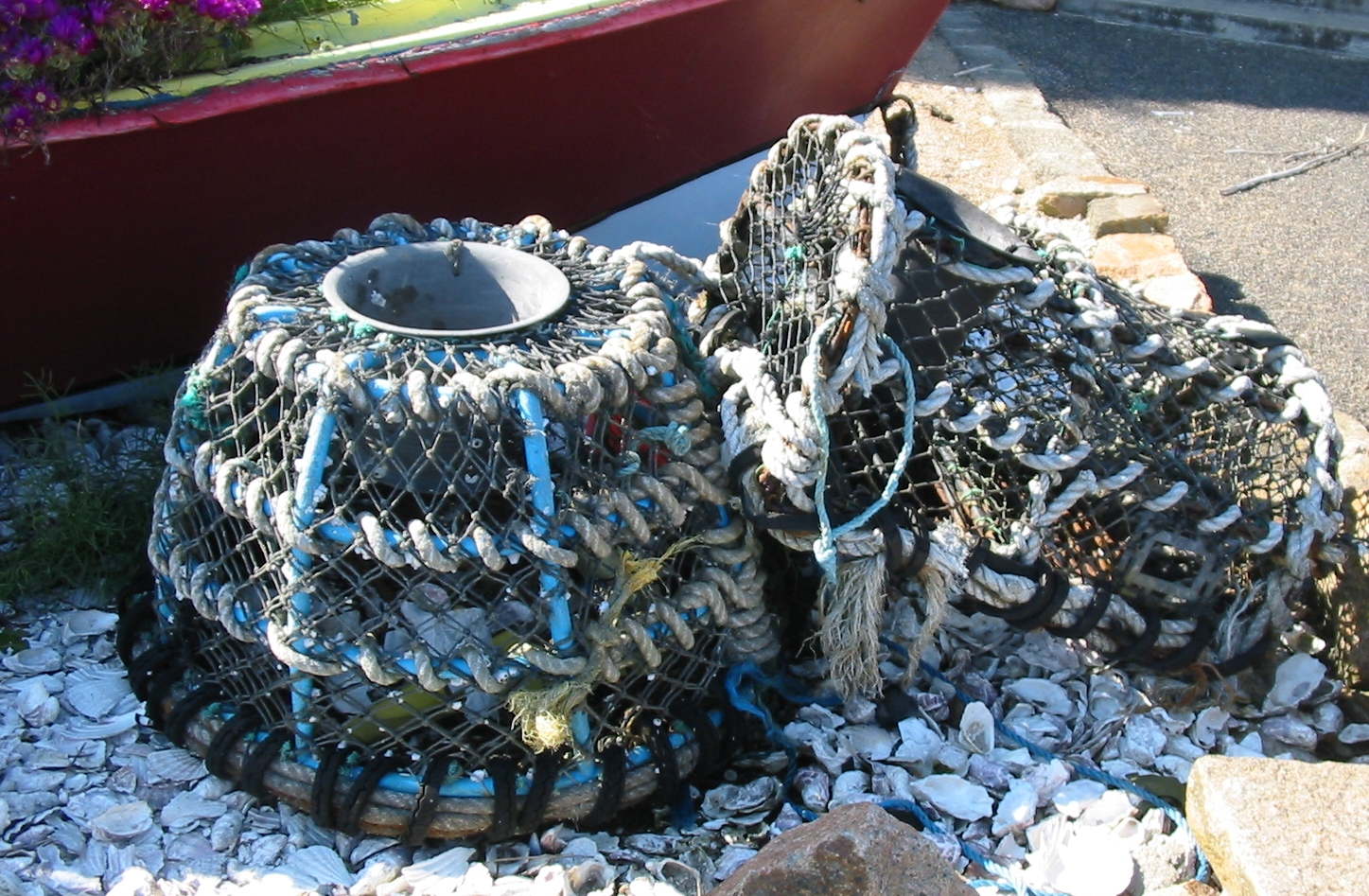|
Long John Silvers
Long John Silver's (formerly known as Long John Silver's Seafood Shoppes and sometimes abbreviated as LJS) is an American chain of fast-food restaurants that specializes in seafood. The brand's name is derived from the novel ''Treasure Island'' by Robert Louis Stevenson, in which the pirate Long John Silver is one of the main characters. Formerly a division of Yum! Brands, the company was sold to a group of franchisees in September 2011 and is now 80% franchise-owned. History The first restaurant opened on August 18, 1969, in Lexington, Kentucky. The original location, on 301 Southland Drive, was previously the Cape Codder seafood carry-out restaurant. The original Cape Codder concrete block building was redesigned by architect Druce Henn, who created the New England style of Long John Silver's early chain restaurants. That original location is now a styling salon. Earlier restaurants were known for their Cape Cod style buildings, blue roofs with square cupolas, wood benc ... [...More Info...] [...Related Items...] OR: [Wikipedia] [Google] [Baidu] |
Easton, Pennsylvania
Easton is a city in, and the county seat of, Northampton County, Pennsylvania, United States. The city's population was 28,127 as of the 2020 United States census, 2020 census. Easton is located at the confluence of the Lehigh River, a river that joins the Delaware River in Easton and serves as the city's eastern geographic boundary with Phillipsburg, New Jersey. Easton is the easternmost city in the Lehigh Valley, a region of that is Pennsylvania's third largest Metropolitan statistical area, metropolitan region with 861,889 residents as of the 2020 United States census, U.S. 2020 census. Of the Valley's three major cities, Allentown, Pennsylvania, Allentown, Bethlehem, Pennsylvania, Bethlehem, and Easton, Easton is the smallest with approximately one-fourth the population of Allentown, the Valley's largest city. The greater Easton area includes the city of Easton, three townships (Forks Township, Northampton County, Pennsylvania, Forks, Palmer Township, Northampton County, Pe ... [...More Info...] [...Related Items...] OR: [Wikipedia] [Google] [Baidu] |
Seafood
Seafood is any form of sea life regarded as food by humans, prominently including fish and shellfish. Shellfish include various species of molluscs (e.g. bivalve molluscs such as clams, oysters and mussels, and cephalopods such as octopus and squid), crustaceans (e.g. shrimp, crabs, and lobster), and echinoderms (e.g. sea cucumbers and sea urchins). Historically, marine mammals such as cetaceans (whales and dolphins) as well as seals have been eaten as food, though that happens to a lesser extent in modern times. Edible sea plants such as some seaweeds and microalgae are widely eaten as sea vegetables around the world, especially in Asia. Seafood is an important source of (animal) protein in many diets around the world, especially in coastal areas. Semi-vegetarians who consume seafood as the only source of meat are said to adhere to pescetarianism. The harvesting of wild seafood is usually known as fishing or hunting, while the cultivation and farming of seafood is kno ... [...More Info...] [...Related Items...] OR: [Wikipedia] [Google] [Baidu] |
The New York Times
''The New York Times'' (''the Times'', ''NYT'', or the Gray Lady) is a daily newspaper based in New York City with a worldwide readership reported in 2020 to comprise a declining 840,000 paid print subscribers, and a growing 6 million paid digital subscribers. It also is a producer of popular podcasts such as '' The Daily''. Founded in 1851 by Henry Jarvis Raymond and George Jones, it was initially published by Raymond, Jones & Company. The ''Times'' has won 132 Pulitzer Prizes, the most of any newspaper, and has long been regarded as a national " newspaper of record". For print it is ranked 18th in the world by circulation and 3rd in the U.S. The paper is owned by the New York Times Company, which is publicly traded. It has been governed by the Sulzberger family since 1896, through a dual-class share structure after its shares became publicly traded. A. G. Sulzberger, the paper's publisher and the company's chairman, is the fifth generation of the family to head the pa ... [...More Info...] [...Related Items...] OR: [Wikipedia] [Google] [Baidu] |
Reuters
Reuters ( ) is a news agency owned by Thomson Reuters Corporation. It employs around 2,500 journalists and 600 photojournalists in about 200 locations worldwide. Reuters is one of the largest news agencies in the world. The agency was established in London in 1851 by the German-born Paul Reuter. It was acquired by the Thomson Corporation of Canada in 2008 and now makes up the media division of Thomson Reuters. History 19th century Paul Reuter worked at a book-publishing firm in Berlin and was involved in distributing radical pamphlets at the beginning of the Revolutions in 1848. These publications brought much attention to Reuter, who in 1850 developed a prototype news service in Aachen using homing pigeons and electric telegraphy from 1851 on, in order to transmit messages between Brussels and Aachen, in what today is Aachen's Reuters House. Reuter moved to London in 1851 and established a news wire agency at the London Royal Exchange. Headquartered in London, Reuter' ... [...More Info...] [...Related Items...] OR: [Wikipedia] [Google] [Baidu] |
Corridor
Corridor or The Corridor may refer to: Arts, entertainment, and media Films * ''The Corridor'' (1968 film), a 1968 Swedish drama film * ''The Corridor'' (1995 film), a 1995 Lithuanian drama film * ''The Corridor'' (2010 film), a 2010 Canadian horror film * ''The Corridor'' (2013 film), a 2013 Iranian drama film * ''Corridor'' (film), a 2013 horror short film Other uses in arts, entertainment, and media * ''Corridor'' (album), a 2009 album by Japanese pop singer Miki Imai * ''Corridor'' (comics), the first Indian graphic novel, written by Sarnath Banerjee * ''Corridor'' (short story collection), a short story collection by Alfian Sa'at, published in 1999 * ''The Corridor'' (opera), a 2009 chamber opera composed by Harrison Birtwistle * Corridor Digital, an American production studio based in Los Angeles Passageways * A narrow hallway, or corridor, a passageway to provide access between rooms inside a building *A passageway along a corridor coach *Wildlife corridor Tran ... [...More Info...] [...Related Items...] OR: [Wikipedia] [Google] [Baidu] |
Nautical Flags
A maritime flag is a flag designated for use on ships, boats, and other watercraft. Naval flags are considered important at sea and the rules and regulations for the flying of flags are strictly enforced. The flag flown is related to the country of Ship registration, registration: so much so that the word "flag" is often used symbolically as a metonym for "country of registration". Types of flag Ensigns Ensigns are usually required to be worn when entering and leaving harbour, when sailing through foreign waters, and when the ship is signalled to do so by a warship. Warships usually wear their ensigns between the morning colours ceremony and sunset when moored or at anchor, at all times when underway, and at all times when engaged in battle—the "battle ensign". When engaged in battle a warship often wears multiple battle ensigns. This tradition dates from the era of sailing vessels. Tradition dictated that if a ship striking the colors, lowered its ensign it was deemed to ha ... [...More Info...] [...Related Items...] OR: [Wikipedia] [Google] [Baidu] |
Ship's Wheel
A ship's wheel or boat's wheel is a device used aboard a water vessel to steer that vessel and control its course. Together with the rest of the steering mechanism, it forms part of the helm. It is connected to a mechanical, electric servo, or hydraulic system which alters the horizontal angle of the vessel's rudder relative to its hull. In some modern ships the wheel is replaced with a simple toggle that remotely controls an electro-mechanical or electro-hydraulic drive for the rudder, with a rudder position indicator presenting feedback to the helmsman. History Until the invention of the ship's wheel, the helmsman relied on a tiller—a horizontal bar fitted directly to the top of the rudder post—or a whipstaff—a vertical stick acting on the arm of the ship's tiller. Near the start of the 18th century, a large number of vessels appeared using the ship's wheel design, but historians are unclear when the approach was first used. Design A traditional ship's wheel is compo ... [...More Info...] [...Related Items...] OR: [Wikipedia] [Google] [Baidu] |
Lobster Trap
A lobster trap or lobster pot is a portable trap that traps lobsters or crayfish and is used in lobster fishing. In Scotland (chiefly in the north), the word creel is used to refer to a device used to catch lobsters and other crustaceans. A lobster trap can hold several lobsters. Lobster traps can be constructed of wire and wood, or metal and netting or rigid plastic. An opening permits the lobster to enter a tunnel of netting or other one-way device. Pots are sometimes constructed in two parts, called the "chamber" or "kitchen", where there is bait, and exits into the "parlour", which prevents escape. Lobster pots are usually dropped to the sea floor, one or more at a time, sometimes up to 40 or more, and are marked by a buoy so they can be picked up later. Description The trap can consist of a wood frame surrounded by mesh. The majority of the newer traps found in the Northeast of the US and the Canadian Maritimes consist of a plastic-coated metal frame. A piece of bait, ... [...More Info...] [...Related Items...] OR: [Wikipedia] [Google] [Baidu] |
Cupola
In architecture, a cupola () is a relatively small, most often dome-like, tall structure on top of a building. Often used to provide a lookout or to admit light and air, it usually crowns a larger roof or dome. The word derives, via Italian, from lower Latin ''cupula'' (classical Latin ''cupella''), (Latin ''cupa''), indicating a vault resembling an upside-down cup. Background The cupola evolved during the Renaissance from the older oculus. Being weatherproof, the cupola was better suited to the wetter climates of northern Europe. The chhatri, seen in Indian architecture, fits the definition of a cupola when it is used atop a larger structure. Cupolas often serve as a belfry, belvedere, or roof lantern above a main roof. In other cases they may crown a spire, tower, or turret. Barns often have cupolas for ventilation. Cupolas can also appear as small buildings in their own right. The square, dome-like segment of a North American railroad train caboose that contains the seco ... [...More Info...] [...Related Items...] OR: [Wikipedia] [Google] [Baidu] |
Cape Cod (house)
A Cape Cod house is a low, broad, single or double-story frame building with a moderately-steep-pitched gabled roof, a large central chimney, and very little ornamentation. Originating in New England in the 17th century, the simple symmetrical design was constructed of local materials to withstand the stormy weather of Cape Cod. It features a central front door flanked by multipaned windows. The space above the first floor was often left as unfinished attic space, with or without windows on the gable ends. The building type enjoyed a boom in popularity and adaptation to modern needs in the 1930s–1950s, particularly with Colonial Revival embellishments. It remains a feature of New England homebuilding. History The Cape Cod cottage–type house (it is a form or type, not a style, though commonly--mistakenly--referred to as a style) originated in the wood-building counties of England and was brought to America by Puritan carpenters. The harsh climate of New England tested the ... [...More Info...] [...Related Items...] OR: [Wikipedia] [Google] [Baidu] |
Franchisee
Franchising is based on a marketing concept which can be adopted by an organization as a strategy for business expansion. Where implemented, a franchisor licenses some or all of its know-how, procedures, intellectual property, use of its business model, brand, and rights to sell its branded products and services to a franchisee. In return, the franchisee pays certain fees and agrees to comply with certain obligations, typically set out in a franchise agreement. The word ''franchise'' is of Anglo-French derivation—from , meaning 'free'—and is used both as a noun and as a (transitive) verb. For the franchisor, use of a franchise system is an alternative business growth strategy, compared to expansion through corporate owned outlets or "chain stores". Adopting a franchise system business growth strategy for the sale and distribution of goods and services minimizes the franchisor's capital investment and liability risk. Franchising is rarely an equal partnership, especially in ... [...More Info...] [...Related Items...] OR: [Wikipedia] [Google] [Baidu] |
Mashed
Mashed may refer to: * Mashed, that created from mash ingredients * Mashed, the result of a mashing * Mashed, the result of a mashup (music) * ''Mashed'' (album), a 2007 mashup album * ''Mashed'' (video game), a vehicular combat video game * Mashed.com, a food website See also * * Mashed potato (other) * Mashable * Mashup (other) * Masher (other) * Mash (other) #REDIRECT Mash {{redirect category shell, {{R from ambiguous page{{R from other capitalisation{{R unprintworthy ... * Mish Mash (other) {{dab ... [...More Info...] [...Related Items...] OR: [Wikipedia] [Google] [Baidu] |



.png)





